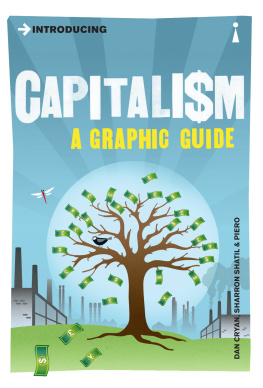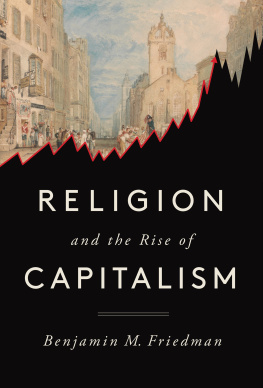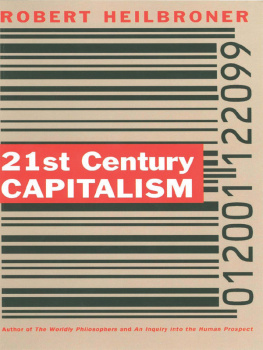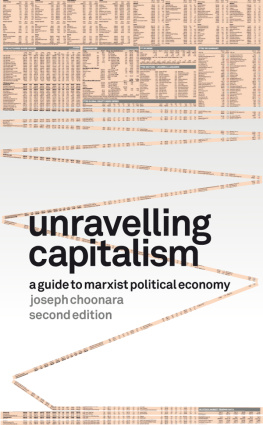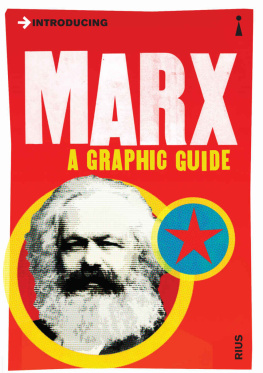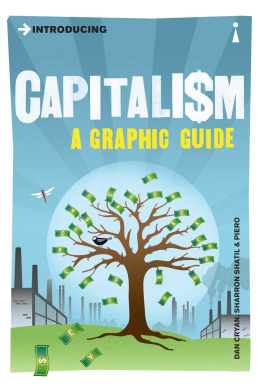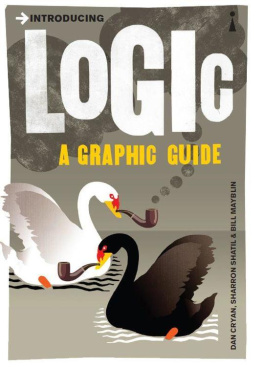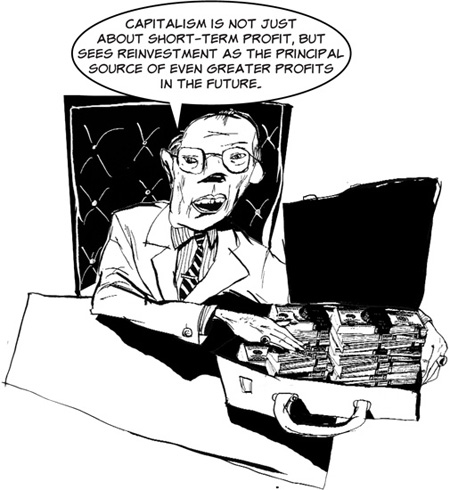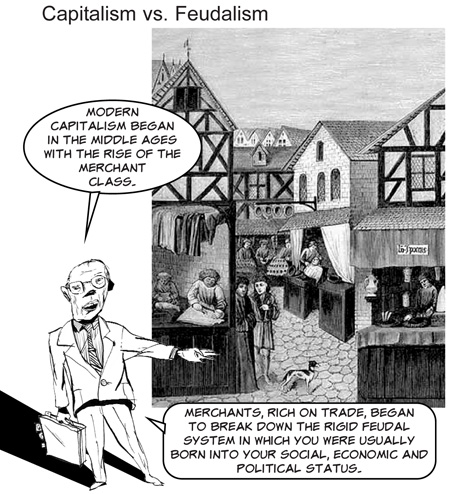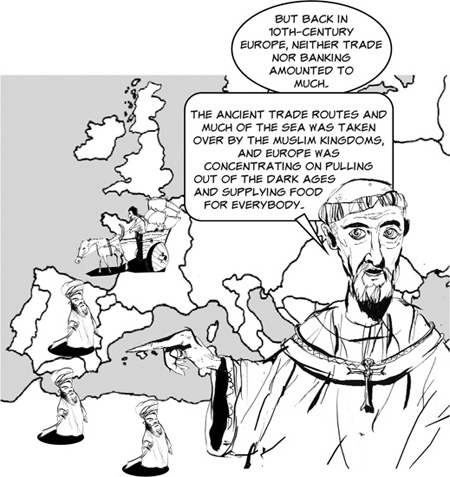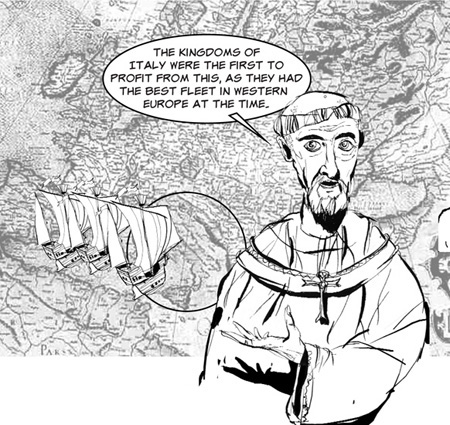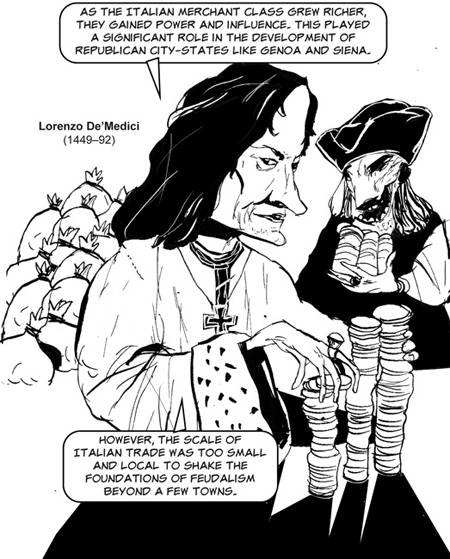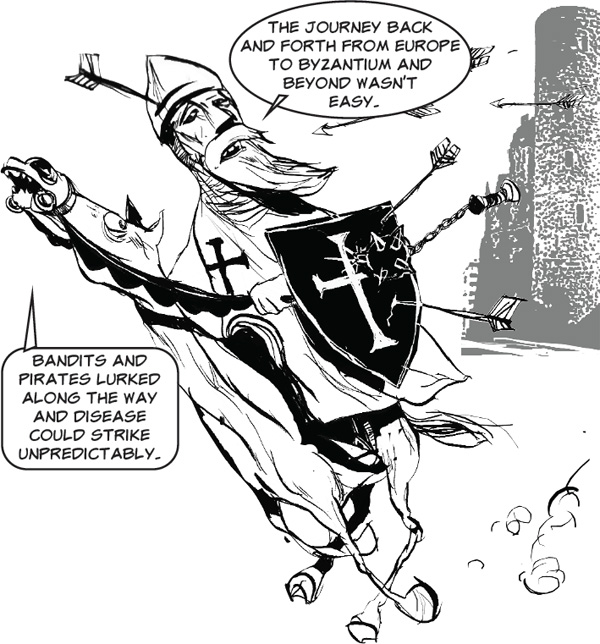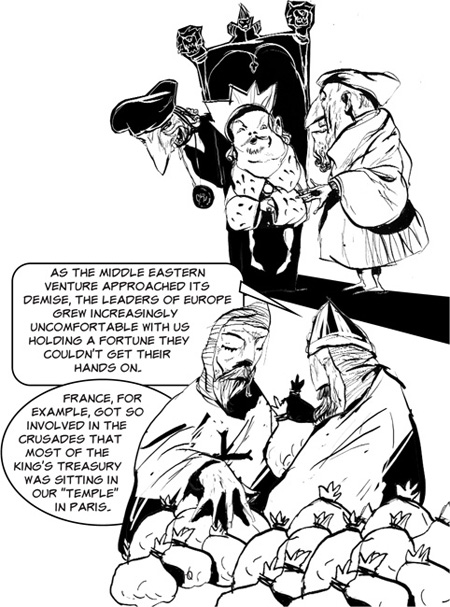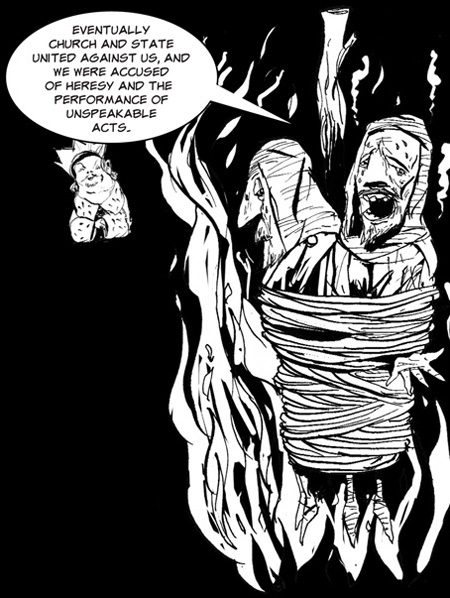Published by Icon Books Ltd, Omnibus Business Centre, 3941 North Road, London N7 9DP
email:
www.introducingbooks.com
ISBN: 978-184831-765-9
Text and illustrations copyright 2013 Icon Books Ltd
The author and artist have asserted their moral rights.
Edited by Duncan Heath
No part of this book may be reproduced in any form, or by any means, without prior permission in writing from the publisher
Contents
Capital and Capitalism
Capitalism is the name of a family of economic systems based on the private ownership of the means of production and trading goods for profit. Capitalist economies tend to be characterized by free competition and industrialization, although capitalism without industry is not a contradiction in terms.
Broadly speaking, capitalist systems give a central role to the accumulation of resources that can be used for further production. These resources, known as capital, give capitalism its name.
capitalism is not just about short-term profit, but sees reinvestment as the principal source of even greater profits in the future.
capitalism vs. feudalism modern capitalism began in the middle ages with the rise of the merchant class. merchants, rich on trade, began to break down the rigid feudal system in which you were usually born into your social, economic and political status.
Once it had taken hold in Europe, capitalism spread around the world like wildfire, the driving force behind business, prosperity, empire and exploitation. As capitalism is an economic system based on trade, private ownership, and currency, its development is bound up with the history of trade and banking.
but back in 10th-century europe, neither trade nor banking amounted to much. the ancient trade routes and much of the sea was taken over by the muslim kingdoms, and europe was concentrating on pulling out of the dark ages and supplying food for everybody.
The food-supplying landowners became the nobility. The feudal economic system they constructed was based on a careful balance between small land units and a stable level of production. Feudalism aims for stability, and this makes it diametrically opposed to capitalism with its search for ever-growing markets.
The Crusades
While merchants and artisans, such as bakers and weavers, had begun to develop influence in Europes cities, it was the Church that gave rise to what was effectively medieval Europes first great international trade venture the Crusades, which started in 1095.
The Crusades led to conquests along the eastern rim of the Mediterranean and gave Europeans more control over traditional trade routes. As a result, the kingdoms of Europe found themselves shipping goods and people across relatively long distances for the first time since the days of the Roman Empire.
the kingdoms of italy were the first to profit from this, as they had the best fleet in western europe at the time.
The rise of trade and banking in 14th-century Europe eventually became the Renaissance, which was supported by bankers made princes like the Medici.
as the italian merchant class grew richer, they gained power and influence. this played a significant role in the development of republican city-states like genoa and siena. lorenzo demedici (144992) however, the scale of italian trade was too small and local to shake the foundations of feudalism beyond a few towns.
The Knights Templar
The first commercial banks appeared in the late 13th century in Italian towns like Siena. The word comes from banco Italian for bench since at first banking services were provided on benches at the towns centre. But banking does not begin with the Italian merchants its origins lie with the Knights Templar, an order of warrior monks founded in 1096 to ensure the safe passage of European pilgrims heading to Jerusalem in the aftermath of the First Crusade.
the journey back and forth from europe to byzantium and beyond wasnt easy. bandits and pirates lurked along the way and disease could strike unpredictably.
So when an order of hardened, experienced Crusaders, who were also known for being zealously honest, offered to take the risk of the journey upon themselves, many jumped at the offer.
The Templars soon had representatives in all the major cities of Europe, and held a series of forts along the main roads connecting the Crusader states.
people could deposit their goods at any of our branches and we would provide them with an official note for its worth in gold, which they could then collect at any other templar centre.
That allowed people to travel light and fast, and to buy what they needed locally wherever they got to. They would need to part with only a small percentage of their gold as a service charge.
Dissolution of the Templars
The Templars got immensely rich during the heyday of the Crusades. Because they were so vital to the survival of the Crusader states, they were granted permission by the Pope to run their own affairs, which meant they were effectively answerable to no one. As the Crusader states began to flounder, the Templars invested more and more of their vast wealth in property in Europe.
as the middle eastern venture approached its demise, the leaders of europe grew increasingly uncomfortable with us holding a fortune they couldnt get their hands on. france, for example, got so involved in the crusades that most of the kings treasury was sitting in our temple in paris.
eventually church and state united against us, and we were accused of heresy and the performance of unspeakable acts.
The order was dissolved in 1314, its leaders were put to the stake, and its wealth confiscated and divided up. The Pope entrusted his share to other Knightly orders that were not so independent. It ended up funding such ventures as the conquest of Prussia from its pagan natives and the reconquest of Spanish territory from the Arabs.

